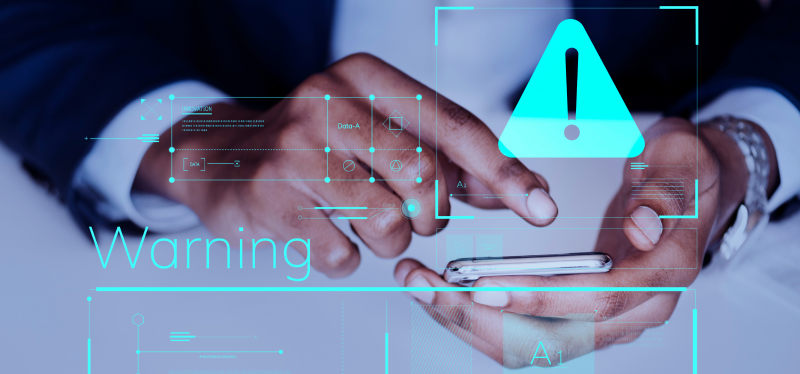
Have you already been the victim of a data leak?
Data breaches — even among major platforms and providers — are becoming an almost daily occurrence.
Here’s what you need to know…and do.
Data breaches — even among major platforms and providers — are becoming an almost daily occurrence. With so much of our life and business being carried out online, and the multitude of devices and platforms we use to work, shop, and play, the “attack surface” for hackers grows (much) larger every minute. Even the biggest and best-run companies and platforms have become favorite targets for hackers. So much so, that attacks on well-known companies and platforms have become almost commonplace.
“There’s a double danger in data leaks becoming so common,” says Emilio Simonis, Research Director at PSafe’s dfndr lab. “First, of course, are the attacks themselves — but as they become more ubiquitous, many people start to take them for granted, and assume they pose only modest personal danger.” Significant lag time between the breach-event itself, and subsequent criminal action on the part of hackers, also contributes to the lack of decisive response. “Hackers are very patient — they know many victims won’t take immediate action to protect themselves,” Simoni remarks, “and they use that aspect of human nature to their advantage.”
Try dfndr security today, it will help you secure your phone and protect your data from hackers and malware of all kinds.
How do breaches happen?
Just as hackers use their knowledge of human nature to design their scams, they also rely on human error to create openings they need to get at private data. Poor passwords and weak credentialing processes are probably the most common source of breaches, and lost or stolen (and unprotected) laptops and drives also contribute.
Phishing scams, enticing recipients to give up data voluntarily, have never flagged in popularity. Malware is also a common method, and is often combined with phishing techniques to get at personal and financial data stores. “Increasingly, these attacks are targeted at corporate assets, so employees must remain vigilant,” Simoni warns, “especially now, as so many people are using devices from their home to connect to work.”
Malware and ransomware have become a more favored method as many users have become used to “shopping by downloading” — trying out free versions of new software solutions before deciding if they want to keep a new app or game. Malware often asks for extensive permissions, then quietly works behind the scenes with the permissions it has accrued, logging data and building up significant data-leverage, before shipping that information payload off, or using it to launch further attacks on the user.
External, code-driven attacks are also growing more common than ever. Often called “brute force attacks,” these are now guided by increasingly sophisticated artificial intelligence, and very powerful computers, to crack weaker protections.
What information do they target?
Hackers have a wide-open market for the information they steal, and generally they’re after Personal Identification Information that most individuals and companies (and laws) seek to protect. Of course they also seek information like bank and credit card account information that gives them immediate financial leverage. The worst nightmare for individuals is when a hacker is able to transact business as their victim through identity theft. Identity theft can be very complicated to undo, and the process of undoing the damage wrought by an identity theft can be protracted and painful. “Hackers are keenly aware of the leverage that personal identifying information gives them,” Simoni cautions, “they know how to make the most of it, and rarely show any restraint once they have the upper hand.”
What can you do?
Major breaches are on the rise and show no signs of tailing off. That’s the bad news. “The good news,” Simoni observes, “is that protecting yourself is still something that you have a lot of control over individually.. It’s something you can do well with some simple habits and tools.“
“We recommend taking three fundamental precautions to all of our customers,” says Simoni. “Make sure you adopt best-practices for your passwords, use two-factor-authentication whenever you can, and use a solution like dfndr security Pro for immediate notice if your personal data has been accessed outside of your control. Our Pro solution also scans new apps to prevent malware attacks.”
“Your phone itself can also be a target,” Simoni advises, “which is why dfndr security Pro has the capability to shut your phone down for use, and show you its location, in case of theft. ”
Best practices for passwords include the following:
- Never use the same password for more than one site.
- Make sure that your passwords are kept up to date on every site, and change them immediately whenever you’ve been notified of a breach.
The Big Benefits of Two-Factor Authentication
Most financial and major social sites now offer two-factor authentication (usually with an option to send a code via-text to your phone). Use these protocols whenever they’re available, as they greatly reduce the capability of hackers to break through.
Breaches are occurring with disturbing frequency, so the best way to stay ahead of the hackers is to have immediate notification of leaks with your personal data at any time. dfndr security Pro offers free unlimited ID theft checks, which can give you the flexibility and insight you need.
As noted, dfndr security Pro also has other important safety features, like a Safe App Scanner to protect you from malicious (data stealing) apps, and Anti-Theft features that help you locate and control your mobile device if it gets lost or stolen.
With dfndr security installed on your phone, you will have more protection, so you can test it now if you like. Click here if you want dfndr security for free.



